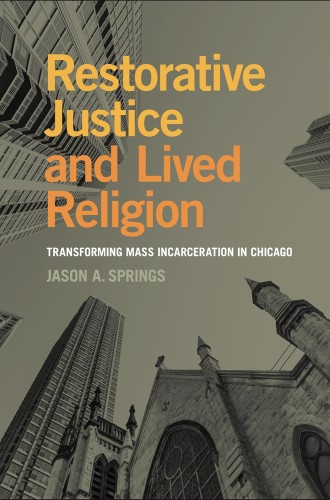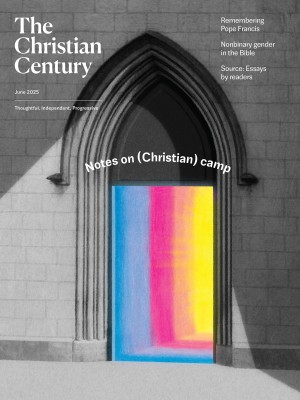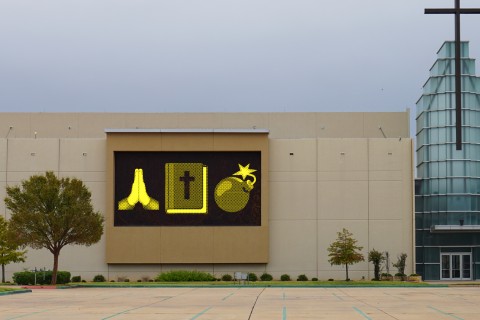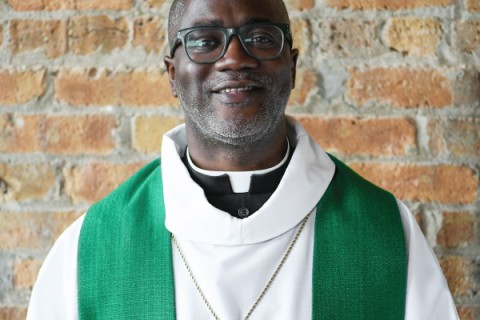The lived religion of restorative justice
Jason Springs immersed himself in justice organizations in Chicago. He offers an account of their peace circles and the hope they cultivate.

Restorative Justice and Lived Religion
Transforming Mass Incarceration in Chicago
Restorative Justice and Lived Religion is the fruit of an activist-scholar’s immersive tutoring by restorative justice organizations in Chicago. Jason Springs, who teaches religion, ethics, and peace studies at the University of Notre Dame, has written a carefully researched, multifaceted, ethical and spiritual analysis of restorative justice practices, viewed through the lens of lived religion. What emerges is a mix of thick description of restorative justice practices, an account of in-house ways of framing the aims and means of those practices with regard to social justice movements, their relation to broader ethical theories, and—what I find most original—a reading of restorative justice practices as features of an implicit lived religion.
The central spiritual practice that Springs reflects upon is the peacemaking circle, used by restorative justice organizations such as the Precious Blood Ministry of Reconciliation in Chicago’s Back of the Yards neighborhood. Peace circles are activated to foster accountability and community building between wrongdoers and those they have harmed, as well as among people who have been incarcerated or released from incarceration, or between police officers and community members who are traumatized by an abuse of police power.
Read our latest issue or browse back issues.
Using Precious Blood and other community-based restorative justice efforts in Chicago as models, Springs develops a moral and spiritual analysis of peace circles for various ends. One is to intervene in the debate between prison abolitionists and prison reformers by demonstrating that peace circles enable critical consciousness and collective initiative-taking that lead to concrete steps toward transforming the prison-industrial complex, which Michelle Alexander has called “the new Jim Crow.” Peace circles are not merely trauma-centered therapies; they enable participation in efforts toward structural change. Springs cites as one example the successful collaborative effort among restorative justice organizations to amend Illinois law so that it now prohibits mandatory life without parole sentences for juveniles.
A second aim is to theorize about the nature of justice, defined as giving persons what they are due. Retributive justice gives victims their due by depriving the wrongdoer of the right to freedom of movement and fullness of life enjoyed by those who are not in prison. In contrast, restorative justice practices foster the “relational personhood” of both wrongdoers and those they have harmed by creating avenues for interpersonal accountability and addressing the dehumanizing elements of the social environment in which a specific act of harm took place. Restorative justice aims to repair communities in more holistic ways that avoid further tearing apart communal bonds through incarceration.
A third aim of Springs’s study is to interpret peace circles as forms of lived religion, in order to intervene in the somewhat quirkily normative debates about definitions of spirituality and religion. According to self-reports by participants in peace circles, they do function as spiritual practices in various metaphysical ways—some theistic, some more humanistic. Moreover, across the spectrum of religion-related identities—from the spiritual but not religious to those who identify with an organized religion, or none at all—participants report that peace circles are fruitful spiritual practices that “co-create community,” build trust amid alienation and brokenness, and invite explicit, collaboratively developed forms of mutual accountability. These new relationships are created not only among participants but also between individuals and the broader community, both interpersonally and structurally—with some peace circles seeding policy changes. Because of the bottom-up nature of peace circles—participants collaboratively create the values and guidelines they will use, passing around a talking stick to prevent one person from dominating the group—they can be seen as expressions of lived religion: ways to make meaning and build community through a shared ritual activity.
Thinking pastorally and ecclesially, readers might ponder how peacemaking circles relate to confessional practices. Confession in corporate worship is stylized—more a reminder of the larger framing for repentance, forgiveness, and renewal in our ongoing lives with God. Peacemaking circles express the kind of intimacy more akin to private confession to a priest. But they also function as an improvised corporate liturgy: a structure in which leadership, rules of etiquette, and an exchange of words are fleshed out anew each time. Peacemaking circles take to heart the priesthood of all believers. How might they shed light on the dynamics and practices of accountability and discernment within congregational life more broadly?
Springs focuses upon peacemaking circles that create community among strangers and the estranged. I wonder about the extent to which their effectiveness varies when the participants are already well known to one another, such as in a church or small town. At a recent American Academy of Religion meeting in San Diego, I posed this question to Australian spiritual director Elizabeth Lee after her presentation, “A Methodology to Explore a Trauma-Sensitive Ecclesial Practice of Hospitality.” Lee has served as a prison chaplain but also utilizes contemplative dialogue circles with urban congregations to assist them in responding to collective trauma, such as sexual violence and child abuse. She told me that she has also used circles effectively to help a congregation council work through a conflict. While she frames peacemaking circles in part within an explicitly Christian contemplative tradition, her research—like that of Springs with his “lived religion” lens—suggests that restorative justice practices have much to teach churches about how to deepen their understanding of and approaches to shared accountability before God and one another, within and beyond congregational life.
By weaving together accounts of Chicago-based restorative justice organizations and perceptive ethical and spiritual analysis, Restorative Justice and Lived Religion nourishes the work of pastors, activists, scholars, and peacemakers alike. Springs names the harsh realities and hard questions regarding the social structures and racist legacies that routinely dehumanize incarcerated people and the communities to which they return. He serves the community-based organizations from which he learned by offering an account of the hope and transformation they cultivate, illuminating their work as spiritual. The larger church would do well to listen and learn from this work of good news and Springs’s meditation upon it.






